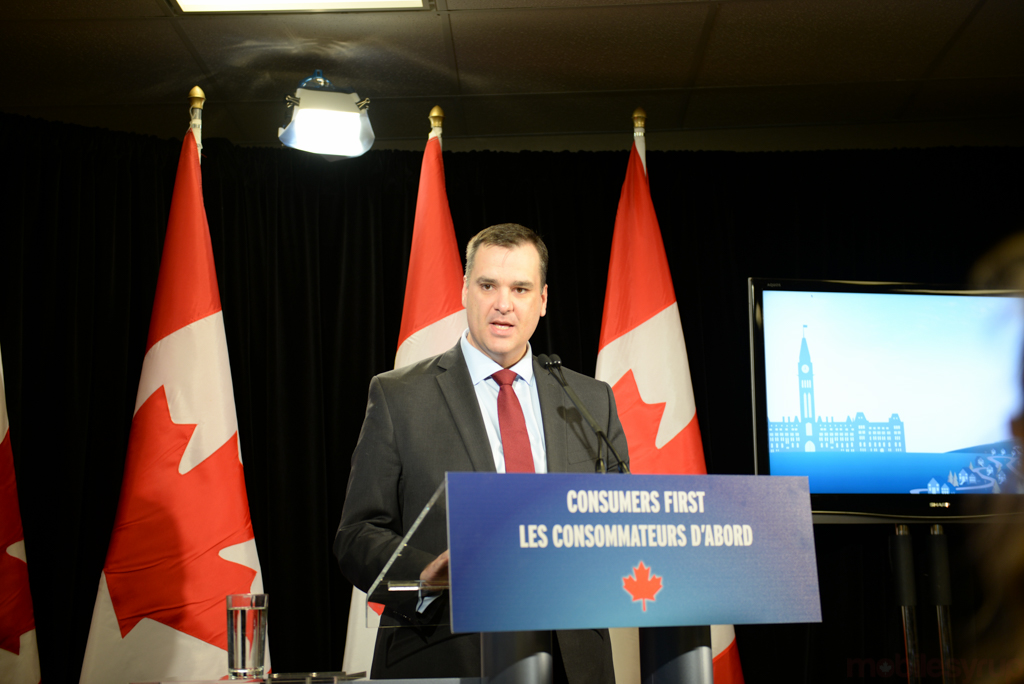
WIND Mobile came away the big winner in the AWS-3 spectrum auction today, as the government raised $2.11 billion from five bidders.
WIND spent $56.4 million on three successful bids in Southern Ontario, Alberta and British Columbia, areas the company already operates. It appears that because Mobilicity was unable to secure the funding necessary for bidding, WIND was uncontested in the three provinces it provides service, earning the entire 30Mhz of set-aside spectrum in each place. The government set aside 30Mhz in two 15Mhz blocks for carriers with under 10% national market share or 20% regional share in the areas they provide service.
Eastlink found success in Newfoundland & Labrador, Nova Scotia & PEI, New Brunswick, and Northern Ontario, spending just under $10 million for 30Mhz in each of those regions — again, presumably uncontested.
Videotron spent $31.8 million for 30Mhz in each of Eastern Quebec, Southern Quebec, Eastern Ontario and Northern Quebec. The company likely battled with WIND Mobile for the airwaves in Eastern Ontario, but came away the victor, precluding the new entrant from expanding to the Ontario borders.
TELUS and Bell spent $1.51 billion and $499.8 million respectively on the remaining two blocks of 10Mhz spectrum across the entire country, splitting the difference in Southern Ontario and riding uncontested in every other region. TELUS took both 10Mhz blocks in high-population regions like Alberta, Southern Quebec and British Columbia, but its spectrum sharing agreement with Bell likely means that both companies will have access to the entire 20Mhz range throughout the country.
TELUS and Bell spent the equivalent of 95% of the $2.11 billion only to increase their cumulative spectrum totals by 20%. Between Rogers, TELUS and Bell, the Big Three used to own approximately 95% of the available spectrum across the country as of 2006, though that number has lowered considerably since then.
Absent from the auction was Rogers, which likely chose to absent itself due to a focus on its 700Mhz rollout, on which it spent $3.3 billion just over a year ago.
The $2.11 billion payments to the government are spread over 10 years, and a percentage of each winner’s airwaves must be deployed to between 40 percent and 60 percent of each region’s respective population within eight years.
Also missing from the roster was SaskTel and MTS, two regional carriers that were not eligible for the 30Mhz set-aside, and likely didn’t see a reason to spend millions of dollars on a technology that hasn’t been finalized. The equivalent AWS-3 auction ended last month in the United States, and no in-market handsets supporting the bands are available at the moment.
Tony Lacavera, WIND Mobile’s Chairman, tweeted after the results became public that his company’s mandate is now to roll out LTE service to its markets.
Congratulations @WINDmobile! I am so proud of the competition and true choice we bring to Canadians!! Next up: Wind LTE services rollout
— Tony Lacavera (@TonyLacavera) March 6, 2015
WIND Mobile customers need not get too excited, at least for the short-term: an LTE rollout will likely take over a year to even begin, so the company is not going to offer higher-speed products for the foreseeable future.
[source]CRTC[/source]
MobileSyrup may earn a commission from purchases made via our links, which helps fund the journalism we provide free on our website. These links do not influence our editorial content. Support us here.


